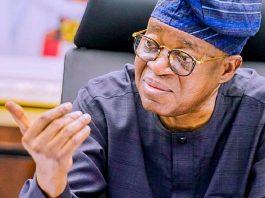No Swing: Why MPC Maintains Status Quo, Hold Key Rates
The Monetary Policy Committee (MPC) meeting that was held on 20th July 2020, has just been concluded and the committee voted to hold all policy parameters constant.
The benchmark interest rate (MPR) was held to 12.50% while the cash reserve ratio remains at 27.50%.
Meanwhile, the Committee voted that the asymmetric corridor should be retained at +200bps and -500bps around the MPR.
Also, the liquidity ratio has been maintained at 30%.
Ahead of the meeting, analysts have maintained that the policy committee would avoid to rock the boat by maintaining status quo.
MarketForces had reported that the Committee would considered key development in the local economy include rising inflation, lower interest and of course steep unemployment – though there have been no statistics since third quarter of 2018.
These three evils forms the core of the monetary policies strategies and directions among the central bankers around the globe.
Rising inflation has lowered purchasing power, and widened negative return in the fixed income market.
In projecting the future, analysts have explained that government protectionists’ policies, foreign exchange shortage will weigh on inflation in the second half.
Movement in average price level has lifted far above the CBN’s single digit inflation targeting.
Chapel Hill Denham research analysts explained that despite the recent decision to postpone the hike in electricity tariffs, its outlook for inflation remains biased to the upside.
The investment firm’s bias is however premise on four factors including the fact that the CBN seems to have hunkered down on protectionist policies.
Earlier this week, analysts said the CBN discontinued the supply of FX for the purpose importing maize/corn, thereby expanding the list of items banned form the official market to 44, with consequences for food processing and animal husbandry sectors.
Since movement restrictions were eased at the beginning of July, there are early signs that wet season planting, which typically takes place between April and July may be below average, due to COVID-19 induced movement restrictions and security challenges.
“We envisage a lower than average harvest season between in the third and fourth quarter of 2020”, Chapel Hill Denham stated.
Explaining further, analysts stated that the PPPRA raised the “guided” price of petrol by 14% in July, and the trajectory seems to be upward, as oil prices have turned a corner.
Chapel Hill Denham explained that FX liquidity challenges could weigh on production costs in the near term, with some pass-through effects on consumer prices.
“Against the backdrop of factors stated above, we estimate July inflation at 12.65%, but lower our year-end target to 13.1% due to the postponement of electricity tariff hike”, analysts stated.
The MPC meeting will be taking place against the backdrop of rising inflationary pressures and external sector instabilities.
Analysts stated that in normal times, the increasing downside risks to the CBN’s dual mandate (price and FX stability) typically call for tightening of monetary policy to attract portfolio capital and restore stability in the FX market.
However, in view of the COVID-19 induced growth challenges facing the country, with the government projecting a -4.2% real GDP contraction in 2020E, analysts at Chapel Hill Denham said they imagine that the priority of the CBN will remain pro-growth in the near term.
“We expect the CBN to continue to deploy other administrative measures, such as Cash Reserve Requirements (CRR) debits and FX restrictions, to tighten Naira liquidity in the money market and reduce demand for foreign currencies in the FX market”, analysts stated.
Chapel Hill Denham stated that as inflation rate which settled at 12.56% in June and still rising; now above the benchmark Monetary Policy Rate of 12.50%, a question could emerge as to the appropriateness of keeping a negative real interest rate.
“In our view, the CBN has shown, by its actions in the past crises, Global financial crisis in 2008 and 2014-2016 oil price plunge, that it is willing to tolerate a period of negative policy real interest rate”, Chapel Hill Denham stated.
Besides, analysts stated that market interest rates have trended lower than inflation rate in recent months, due to lower supply of OMO bills and the ban placed on non-bank local investors from participating in the OMO market.
“As a result, despite increasing inflationary pressures, we do not envisage a policy rate hike at the meeting next week, nor in H2-2020.
“Rather, we expect the CBN to maintain status quo on key rates, including the MPR at 12.5%”, analysts at Chapel Hill Denham explained.
Before the schedule meeting, MarketForces had made forecast as per possible outcome of the meeting.
We had analysed and predicted the following:
Raise interest rate: Lifting lid on the lower interest rate would means fixed income assets repricing. Government is on borrowing spree, this might not be idea for steep deficit position.
In the recent time, the CBN has been financing government, monetizing debt which analysts say has crossed the level provided in the CBN Act.
Lowering interest rate: Quite unlikely given the fact that inflation rate is on ascendancy, and it has already widened negative return.
Status quo maintenance: This choice is open as the apex bank may not want to rock the boat.
At 12.56%, headline inflation rate is affecting purchasing power, going up further would mean that fixed income investors would start demanding for rates adjustment.
Price stability is at the core of monetary policy, with inflation moving up on month on month for 11-months straight, the MPC has something to worry about.
The CBN 65% loan to deposit ratio has failed to reduce unemployment rate, a situation that has been exacerbated by the rampaging coronavirus.
With unemployment becoming unfriendly for a nation whose population is more than 200 million, CBN would go for policy that stimulate economic performance.
That would mean no to monetary policy rate hike, but multi-tiered foreign exchange rates would also mean lower foreign investment.
Analysts believe that there is capacity constraint as a result of COVID-19 pandemic which makes case for lower productivity.
Would MPC Raise CRR? Should the policy committee raise cash reserve ratio, it would effectively work against the CBN 65% loan to deposit ratio target.
Analysts Challenge CBN to Address FX Rates Confusion
Cash reserve ratio is 27.5%, adding this to 65% loans to deposit ratio means that the CBN has control over 92.5% of total deposits in the banking sector.
MPC Maintains Status Quo, Holds Key Rates
So, there is a limited room for the Committee to manoeuvre raising CRR without looking at the need to stimulate economic performance.
CRR could be lowered but it is also unlikely that the Committee would appreciate this move given the fact that it would give leeway for liquidity in the banking sector, then lenders would play strong in the foreign exchange auction.
Now, the CBN policy direction would not support high liquidity outside its control in the banking sector as a way to keep lenders from FX auction.
But then, CRR could be lower but with caveat – increase loan to deposits ratio. This would eventually balance the equation of liquidity in banking sector.
So, what?
Since the CBN is enjoying the ride except for skyrocketing inflation rate, there is possibility of maintaining status quo than making adjustment.
The rule is simple, “You don’t get to rock the boat”!
No Swing: Why MPC Maintains Status Quo, Hold Key Rates



